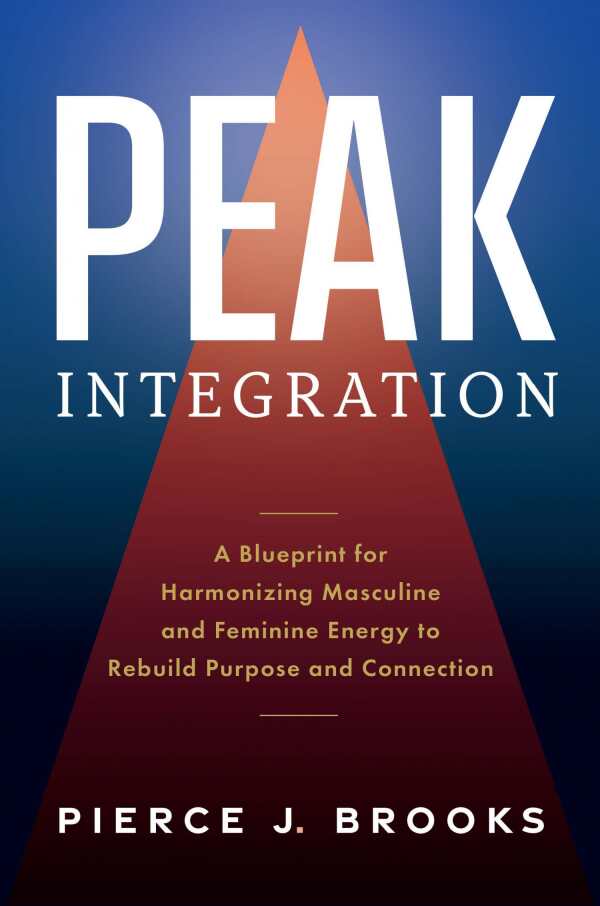Peak Integration
A Blueprint for Harmonizing Masculine and Feminine Energy to Rebuild Purpose and Connection
“About the universal forces that shape us all,” Peak Integration is a revealing memoir–cum–self-help text.
Concerned with personal and social imbalances, motivational speaker and life coach Pierce J. Brooks’s self-help text Peak Integration explores how masculine and feminine energies tie to reintegration and positive change.
Exploring what it considers the ideal, integrative male and female energies that are not limited to biological sex, along with the negative tendencies of each polarity, the book declares that it isn’t “about gender” but “about the universal forces that shape us all.” Among the negative aspects of “disintegrated” male energy, it names aggressive, hedonistic, and vindictive attitudes, contrasting these with positive male energies said to foster dynamic, protective, and constructive behavior. And integrated female energy, it says, is enlightened, creative, and content, while disintegrated female qualities lead to inertia, escapism, and a lack of confidence. If people are receptive to recognizing and improving male and female energy flows, the book asserts, holistic change can occur. In service of this, it introduces techniques for identifying, rebalancing, and sustaining integrated energies toward the ultimate goal of “self-awareness and energetic fluency.”
In support of its dualistic claims, the book cites contrasts within the natural world as examples of essential balance: The sun is tempered by the moon; day becomes night; life evolves from death. Taoist philosophy is used to support dualities of thought, as with yin and yang; Hindu deities Shiva and Shakti are referenced as representing masculine and feminine interplays in the Tantric tradition, too.
Memoir elements wend in as well, as Brooks shares his own story of emergence. He recalls dealing with sex and pornography addictions, as well as toxic masculinity. His early disappointments and setbacks are contrasted with his later determination to overcome harmful and compulsive behavior patterns. The significance of his parental influences is also unpacked, from his father’s “womanizing” and bullying to his mother’s mystical avoidance of reality. Through his personal energy integration consciousness, Brooks declares, he learned to move beyond the intergenerational trauma that these postures represented, reevaluating the cultural and racial expectations placed upon him. His story becomes the bedrock for the book’s advice: When “we choose to observe disintegration appropriately in its segmented expressions,” he says, “we can evaluate it against the sense of fundamental truth resonant in us all.”
Expanding its arguments beyond its work toward improving individual male-female energy balances, the book also investigates how external polarities relate to hostility and division on a global level. It indicts religious dogma and political extremism for inflaming such conflicts, and it asserts that social media promotes addictive and contentious communications. Its interplay of revelation, social critique, guidance, and focused application is further centered by illustrative charts, graphics, and summary points. Reflective exercises are present to encourage further introspective analysis, while spotlighted case studies exist as brief, comprehensive examples of the book’s broader concepts.
A challenging and compassionate self-help text, Peak Integration introduces a framework for far-reaching personal transformation.
Reviewed by
Meg Nola
Disclosure: This article is not an endorsement, but a review. The publisher of this book provided free copies of the book and paid a small fee to have their book reviewed by a professional reviewer. Foreword Reviews and Clarion Reviews make no guarantee that the publisher will receive a positive review. Foreword Magazine, Inc. is disclosing this in accordance with the Federal Trade Commission’s 16 CFR, Part 255.

